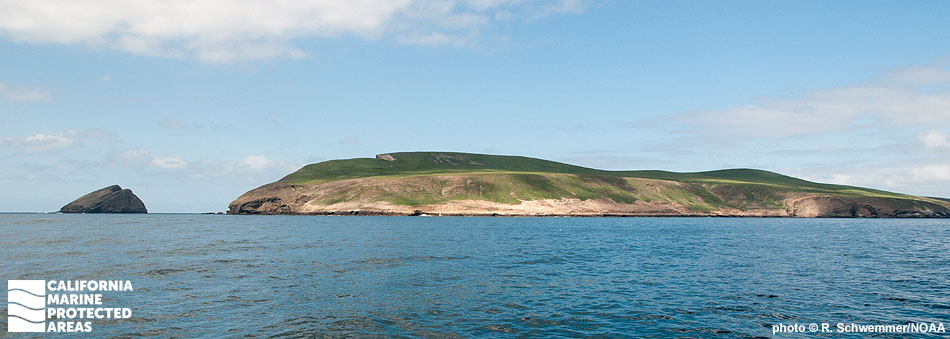
Overview
Santa Barbara Island is the smallest of the California Channel Islands, covering only one square mile in area. Nearly 13 square miles of ocean waters off the island are protected within the Santa Barbara Island State Marine Reserve (SMR), however. Where the SMR ends at three nautical miles from shore, the federal Santa Barbara Island Marine Reserve (FMR) continues farther offshore to meet the outer boundary of the surrounding Channel Islands National Marine Sanctuary.
Santa Barbara Island SMR lies on the southeastern side of the island and reaches depths greater than 1,600 feet. The SMR protects mostly sandy seafloor habitat. Fish and invertebrates such as garibaldi, rockfish, California spiny lobster, sea stars, and sea urchins are abundant in the SMR.
Most of the coastline around the island is rocky with some steep cliffs, which makes it the ideal location for animals seeking refuge, particularly nesting seabirds like California brown pelicans, cormorants, Western gulls, storm-petrels, and Scripps’ murrelet. Other notable inhabitants of the island that benefit from its protected status include northern elephant seals, California sea lions, and harbor seals.
Regulations
It is unlawful to injure, damage, take, or possess any living, geological, or cultural marine resource.
California Code of Regulations Title 14, Section 632(b)(116)(opens in new tab)
Note: The state and federal marine reserves share identical regulations.
Quick Facts
These facts are for the state marine reserve only.
MPA size: 12.77 square miles
Shoreline span: 0.8 mile
Depth range: 0 to 1,655 feet
Habitat composition*:
- Rock: 0.74 square miles
- Sand/mud: 2.43 square miles
*Habitat calculations are based on three-dimensional area and may exceed the total MPA area listed above.